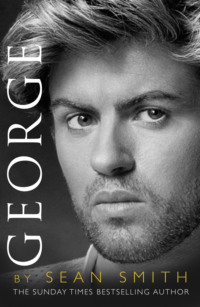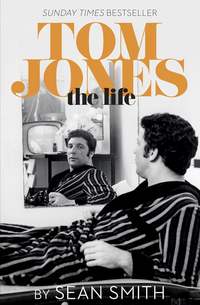
Полная версия
Ed Sheeran
As well as sorting out the day-to-day administration and editing the books, Imogen was a creative force not to be underestimated. These days, she is given a postscript in biographies of her famous son as a mum who dabbles in jewellery design. That sells her very short. She graduated with an MA in art history from the University of St Andrews, the same degree Kate Middleton would later obtain. After completing her studies, she worked in the press office at the National Portrait Gallery in London before moving north with John and becoming the gallery services officer at the Manchester City Galleries.
She used her artistic flair to transform the somewhat austere interior of the house in Birchcliffe Road into a magical pot-pourri of beautiful paintings and sculptures. She ditched wallpaper and emulsion in favour of a patterned fabric that she hung on the walls, like tapestry. Her little touches made the rather cold house, which used to be the local doctor’s surgery, feel far warmer, especially in winter when a roaring fire was essential.
The boys shared the attic space as a bedroom and, looking out through the window, they could see across the valley to the spire of Heptonstall Church, where Sylvia Plath is buried. Imogen knocked through the wall into the next room to create an opening with a private play area they could crawl through. It was like a giant Wendy house for boys.
Lock is Imogen’s maiden name and her family was well connected and high-achieving – particularly in the contrasting worlds of music and medicine. She was named after Imogen Holst, a family friend and the daughter of Gustav Holst, composer of the classical favourite The Planets Suite. Imogen Holst was a gifted composer in her own right. Significantly, she was the personal assistant of Benjamin Britten, one of the most famous of all British composers, who co-founded the Aldeburgh Festival in Suffolk in 1948.
Ed’s grandmother, Shirley Lock, sang for Britten and for many years she and her husband, Stephen, would spend their summers on the Suffolk coast to be part of the annual musical celebration. Britten and his partner, the tenor Peter Pears, were both godfathers to their eldest son, Adam. On one memorable occasion the little boy spotted one of the famous men walking along the seafront at Aldeburgh. ‘Look!’ he exclaimed. ‘It’s Uncle Ben-Peter!’
Shirley had an impressive musical CV as a founder second violinist with the National Youth Orchestra of Great Britain in 1948. She was also a member of the Cambridge University Musical Society (CUMS) orchestras, as well as a number of prestigious singing groups, including the Purcell, BBC and Ambrosian Singers.
In a family of high-achievers, Shirley’s husband, Dr Stephen Lock, perhaps stands pre-eminent. He is a CBE, one rank below a knight, and has a long entry in Who’s Who. For sixteen years, he was the much-respected editor of the BMJ (British Medical Journal) until he retired from the role the year Ed was born. His speciality, for which he won a worldwide reputation, was the future of the editing of scientific data and the responsibilities of ‘journalogy’ as he called it.
Stephen also supported the new venture of Sheeran Lock. He joined forces with his son-in-law John to write a book entitled The Gift of Life, which explored the paintings of Sir Roy Calne, the organ-transplant pioneer. Imogen continued the family’s medical heritage by producing A Picture of Health. Her book accompanied a landmark exhibition of Susan MacFarlane paintings at the Barbican Gallery, London, about the clinical treatment of breast cancer.
Stephen shared his wife’s artistic passions, for opera in particular. In Who’s Who he declares, amusingly, his recreations as ‘reading reviews of operas I can’t afford to see’ and ‘avoiding operas whose producers know better than the composer’. For many years he has been a popular volunteer at the Britten-Pears Foundation library in his beloved Aldeburgh.
Although Ed was close to his grandparents, he never knew his Uncle Adam. He had been fatally wounded at his home in Alleyn Crescent, Dulwich, two weeks after Matthew’s birth in March 1989. The local newspaper, the South London Press, described the distressing circumstances under the stark headline ‘Man Shoots Himself’.
Adam, an investment manager in the City, shot himself twice with a shotgun he used for clay-pigeon shooting. According to the paper, he left his girlfriend asleep upstairs at about 4 a.m. one Friday morning while he let himself into the garage. There, he sat in an old armchair and turned the gun on himself. The first bullet pierced his left shoulder. He then reloaded and shot himself a second time.
Adam died two hours later in King’s College Hospital, Camberwell. He was thirty-one. The death certificate was issued by the Inner South District coroner Montagu Levine after an inquest in June. He listed the cause of death as ‘Gunshot Wound to Head and Chest. He killed himself’.
On the first anniversary of his death, in 1990, a dignified notice appeared in the In Memoriam column of The Times, remembering Adam Timothy Southwick Lock and quoting Tennyson:
But trust that those we call the dead
Are breathers of an ampler day
For ever nobler ends.
The poet wrote his monumental elegy In Memoriam, also known as In Memoriam A.H.H., as a tribute to his friend Arthur Henry Hallam, who had died tragically young from a brain haemorrhage. The most often quoted lines are: ‘’Tis better to have loved and lost than never to have loved at all.’ Tennyson took seventeen years to write his masterpiece as he struggled to deal with the effects of sudden bereavement.
In March 1991, when Ed was six weeks old, the same notice appeared again in The Times. In 1995, without fuss, a painting was adopted in memory of Adam Lock at the Dulwich Picture Gallery. The peaceful work by the seventeenth-century Dutch artist Adriaen van Ostade is an oil on panel entitled simply ‘Interior of a Cottage.’ Adam would not be forgotten.
Ed’s grandparents’ love of music rubbed off on his mother, Imogen, who has a lovely voice and has been a mainstay of her church choir for many years. Ed, however, has never shared the family’s enthusiasm for classical music, unlike his brother Matthew, who had an obvious talent for it from an early age.
Ed enjoyed musical instruments, though. In his first classroom there was a musical bar where the children could help themselves to drums, recorders and other instruments and make as much noise as they liked. Ed loved this – much more than sport, for which he never had much of a taste.
By the time Ed began school, his birthmark had been successfully treated by laser but he was painfully shy, with a pronounced stammer. He later revealed that it was a result of one of his laser treatments, when the technicians forgot to administer the anaesthetic cream. Although the two brothers started at Heathfield Junior School at the same time, they were in separate classes because of the difference in age. Matthew, who was much more confident, never fussed around his younger brother but he was always there if Ed needed him.
Ed began in Reception, the infants’ class. The teaching assistant, Gillian Sunderland, remembers that the two brothers had very contrasting personalities, with Ed being by far the quieter: ‘He was rather nervy. He wasn’t needy in the sense of needing looking after but he was extremely shy. Extremely shy! He found mixing with other children rather challenging so he needed to be encouraged to mix really. He had a slight stutter but it was noticeable and I think he probably struggled with that.’
Looking back, Ed recalled that he had a ‘really, really bad stammer’. His own memories confirm that, as a little boy, he found it difficult to join in. He told Kirsty Young on Desert Island Discs that he was a bit of a weird kid: ‘I lacked an eardrum so I couldn’t go swimming – which helps get friends.’
Heathfield is a private co-educational school in the small village of Rishworth, a ten-mile drive from Hebden Bridge down demanding country lanes, but it was worth it for the idyllic setting. Heathfield and its senior equivalent, Rishworth School, occupy 130 acres. The youngsters could spend much of the summer outdoors, playing and being taught in the open air. Gillian explains, ‘There are other schools but if you want your child to enjoy the environment then you would choose here.’
While Ed would learn the basics of English, maths and phonics, much of the teaching at the school revolved around being creative. A small river ran through the grounds and the class would be taken down to look at the water and were encouraged to write a little story about it or perhaps draw a picture. Ed particularly liked to sit outside quietly and draw with his crayons.
The teachers liked Edward, as everyone called him at school, because he was such a gentle boy. While he was small for his age, he stood out with his bright ginger hair and big round glasses. ‘He wasn’t the type of boy who liked fuss, though,’ recalls Gillian. ‘He was very much a “Let’s get on with it” type. He wasn’t in need of stroking all the time.’
In the well-known photograph of young Ed in his burgundy-coloured school blazer and grey shorts he is wearing the Heathfield uniform. Throughout his childhood he was fortunate in that his parents were sociable, and popular with other parents and teachers. Gillian observes, ‘They were the type of people that you don’t forget because they were lovely – so genuine and very supportive and caring.’
When it came time for the Sheeran boys to move on because the family were relocating to Suffolk, Imogen presented Gillian Sunderland and form teacher Christine Taylor with a thank-you card – a pencil drawing of her two sons.
Growing up, Ed and Matthew were the subject of many works of art. One important creative decision that Ed’s parents made was to commission paintings, sculpture and lihographs of their children so that there would be a lasting record of their early lives. As a result, there is a superb archive of them, not just sentimental camcorder shots. A further consequence of their foresight is that Ed has always been entirely comfortable posing for camera or paintbrush, and thousands of pictures of him are in circulation. Imogen’s thoughtful gift ensured the boys would not be forgotten at Heathfield. One of the key reasons for their departure was the discovery that Matthew – not Ed – had considerable musical talent. He was showing potential as a treble soloist and there were greater opportunities for a boy soprano in Suffolk, near his grandparents in Aldeburgh and at St Edmundsbury Cathedral in Bury St Edmunds.
Imogen let slip why they were moving when she showed potential buyers around the house in Birchcliffe Road. Eventually it was bought by a local vet, Clare Wright, who was in awe of the art scattered throughout their home. She recalls, ‘There was wonderful, beautiful artwork everywhere.’ Every inch of wall seemed to have a painting hung on it, making the walls look bare when she moved in just before Christmas in 1995, when the family had left with their artworks. Ed was nearly five.
The Sheerans did, however, leave behind the piano, which also features in the ‘Photograph’ video, with Ed attempting to play it. Pianos are notoriously difficult to move and this was no Steinway, so it stayed put in the front room.
Eventually, Clare decided to give it away and, consequently, Ed Sheeran’s first piano moved ten miles down the Burnley road to the Elland Working Men’s Club. The family would need a new one when they moved into their next home in the Suffolk market town of Framlingham.
Конец ознакомительного фрагмента.
Текст предоставлен ООО «ЛитРес».
Прочитайте эту книгу целиком, купив полную легальную версию на ЛитРес.
Безопасно оплатить книгу можно банковской картой Visa, MasterCard, Maestro, со счета мобильного телефона, с платежного терминала, в салоне МТС или Связной, через PayPal, WebMoney, Яндекс.Деньги, QIWI Кошелек, бонусными картами или другим удобным Вам способом.








